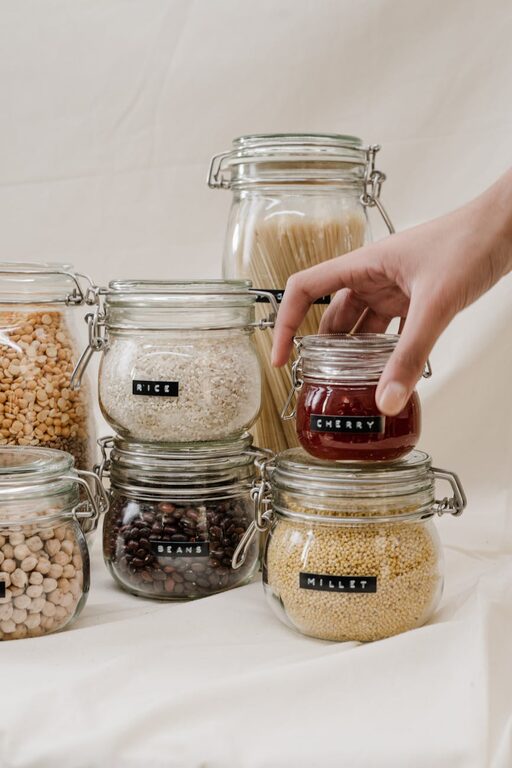Planning meals from what you already have in your pantry can transform how you cook and shop. It saves money, reduces food waste, and makes weeknight dinners easier. With a few easy strategies, you can turn basic ingredients into tasty, wholesome meals without extra trips to the store.
In this post, we’ll explore how to plan meals using pantry staples, what to keep stocked, and some recipe ideas to get you started.
Why Plan Meals Around Pantry Staples?
Pantry staples are non-perishable or long-lasting ingredients that form the foundation of many recipes. Using them smartly means:
– Less last-minute stress: No scrambling to find ingredients.
– Saves money: Limits impulse buys and food waste.
– Faster meal prep: Many staples are quick to cook or combine.
– Versatility: Staples like beans, rice, and canned tomatoes work in countless dishes.
By focusing on what you already have, you create a more efficient and budget-friendly cooking routine.
Essential Pantry Staples to Keep On Hand
Before meal planning, it helps to have a well-stocked pantry. Here are some essentials to consider:
Grains and Pasta
– Rice (white, brown, or wild)
– Pasta (spaghetti, penne, or shells)
– Quinoa or couscous
– Oats
Canned and Jarred Goods
– Beans (black, chickpeas, kidney)
– Tomatoes (diced, crushed, or sauce)
– Broth or stock (vegetable, chicken, or beef)
– Coconut milk
Baking and Cooking Basics
– Flour
– Sugar (white, brown, or honey)
– Baking powder and baking soda
– Salt and pepper
– Oils (olive, vegetable)
– Vinegars (balsamic, apple cider)
Spices and Seasonings
– Garlic powder and onion powder
– Dried herbs (oregano, basil, thyme)
– Chili flakes or paprika
– Curry powder or cumin
Other Useful Ingredients
– Nut butters
– Nuts and seeds
– Dried fruit
– Soy sauce or tamari
How to Assess Your Pantry Before Planning
Start by taking stock of what you have. Organize shelves and check expiration dates. Group similar items together so you can easily see your options.
Make a simple list or inventory:
– Write down all usable ingredients.
– Note quantities and expiration.
– Highlight items you want to use soon to avoid spoilage.
This step helps you plan meals around what’s available, saving time and money.
Steps to Plan Meals Using Pantry Staples
1. Choose Your Base Ingredient
Pick a main pantry staple as the starting point—such as rice, pasta, or canned beans. This base will guide your meal’s flavor and type.
2. Add Protein Sources
Supplement your meal with proteins you have or can combine with pantry items. Examples:
– Canned beans or lentils
– Canned tuna or salmon
– Eggs (if available from your fridge)
– Tofu or tempeh (if pantry-stocked)
3. Incorporate Vegetables
Use fresh, frozen, or shelf-stable vegetables. Frozen veggies work well as a convenient option, and canned vegetables like corn or green beans can add variety.
4. Use Herbs and Spices to Add Flavor
Seasoning transforms simple ingredients. Use your dried herbs and spices to create different cuisines — Italian, Mexican, Indian, or Mediterranean.
5. Plan Complementary Sides or Add-Ins
Think about bread, salads, or dips to make the meal complete. These can also be prepared from pantry staples like crackers, nuts, or canned olives.
Sample Meal Ideas Using Pantry Staples
Here are a few easy, flexible meal ideas you can try.
1. One-Pot Bean Chili
– Base: Canned beans (black or kidney)
– Add: Canned diced tomatoes, onion powder, chili powder, garlic powder
– Serve with: Rice or crusty bread
2. Pasta Aglio e Olio
– Base: Spaghetti
– Add: Olive oil, garlic powder or fresh garlic, chili flakes, dried parsley
– Option: Toss in canned tuna or frozen spinach for extra protein and greens
3. Chickpea Curry
– Base: Canned chickpeas
– Add: Coconut milk, curry powder, canned diced tomatoes
– Serve with: Rice or quinoa
4. Rice and Beans Bowl
– Base: Rice and canned beans
– Add: Cumin, paprika, onion powder, a squeeze of lime (if available)
– Top with: Nuts or seeds for crunch
5. Quick Vegetable Soup
– Base: Broth or stock
– Add: Canned tomatoes, frozen or canned mixed vegetables, herbs like thyme and basil
– Serve with: Bread or crackers
Tips for Keeping Your Pantry Organized
– Use clear containers or labels for easy identification.
– Rotate items so older products get used first.
– Keep shopping lists handy to restock essentials.
– Store items by category to speed up meal prep time.
Conclusion
Meal planning with pantry staples is an excellent way to simplify cooking, stay on budget, and create nutritious meals. With a well-stocked pantry and a bit of creativity, you can whip up a variety of dishes without needing a last-minute grocery run.
Give it a try this week: take a look in your pantry, pick some staples, and plan a few meals ahead. You’ll likely find cooking becomes more enjoyable and less stressful.
Happy cooking!



